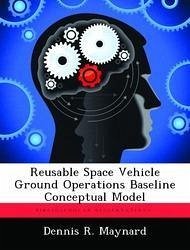
Performance Capability of a Damaged Lighter-Than-Air Vehicle Operation in the Near Space Regime
Versandkostenfrei!
Versandfertig in über 4 Wochen
52,99 €
inkl. MwSt.
Weitere Ausgaben:

PAYBACK Punkte
26 °P sammeln!
This study investigates the ability of a high-altitude airship to maintain lift following the compromise of its lifting gas envelope. Accepted engineering principles are applied to develop a model that provides comparative analyses for airship depressurization alternatives following hull compromise. Specifically, maintaining lifting gas envelope overpressure to provide controllability in wind currents while sacrificing some buoyancy is compared with allowing envelope depressurization to occur with the goal of maintaining greater buoyancy as long as possible. The model provides insights to alte...
This study investigates the ability of a high-altitude airship to maintain lift following the compromise of its lifting gas envelope. Accepted engineering principles are applied to develop a model that provides comparative analyses for airship depressurization alternatives following hull compromise. Specifically, maintaining lifting gas envelope overpressure to provide controllability in wind currents while sacrificing some buoyancy is compared with allowing envelope depressurization to occur with the goal of maintaining greater buoyancy as long as possible. The model provides insights to alternatives for recovering a damaged vehicle and its payload. In particular, the analysis demonstrates that maintaining the ability to navigate while forfeiting buoyancy can provide additional down-range maneuver capability. In some cases preserving the airship's hull overpressure for some period of time following compromise, vice allowing a slow depressurization to atmospheric equilibrium, extends the distance a damaged airship can sustain controlled navigation as much as eighty percent. However, the airship will forfeit nearly twenty percent of the altitude it would otherwise preserve by not forcing a constant hull overpressure.














